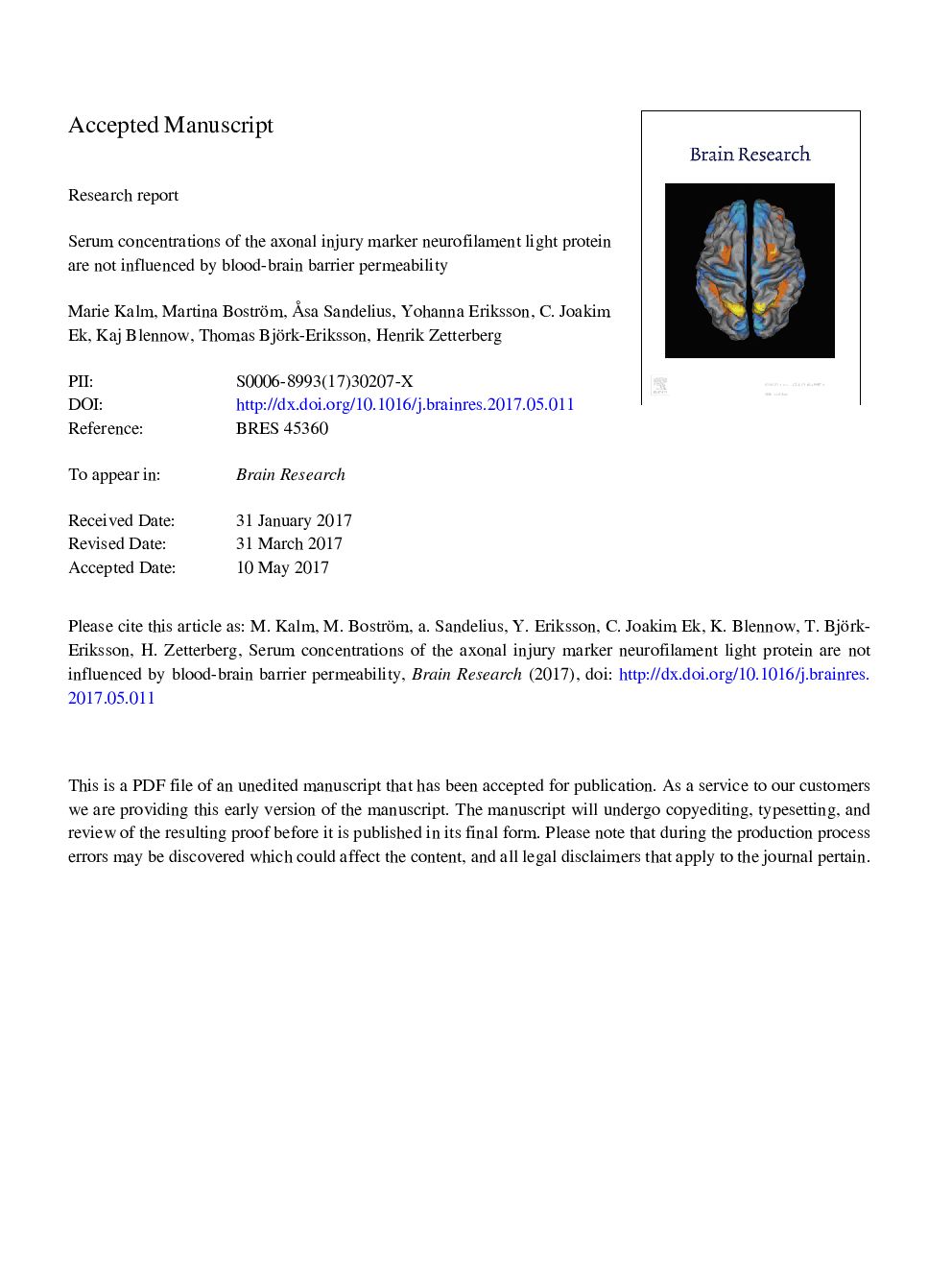| Article ID | Journal | Published Year | Pages | File Type |
|---|---|---|---|---|
| 5736509 | Brain Research | 2017 | 25 Pages |
Abstract
A blood biomarker to monitor individual susceptibility to neuronal injury from cranial radiotherapy could potentially help to individualize radiation treatment and thereby reduce the incidence and severity of late effects. An important feature of such a blood biomarker is that its concentration is not confounded by varying degrees of release from the brain into the blood across the blood-brain barrier (BBB). In this study, we investigated serum neurofilament light protein (NFL) concentrations in 21-day old mice following a single dose of cranial irradiation (8 Gy). Cranial irradiation resulted in acute cell injury measured as a 12.9-fold increase in caspase activity 6 h after irradiation; activation of inflammation measured by levels of CCL2 and increased BBB permeability measured by 14C-sucrose concentration ratios in brain and cerebrospinal fluid (CSF). Serum levels of NFL peaked at 6 h after both anesthesia and cranial irradiation, but no timely correlation of serum NFL concentration with BBB permeability was found. Further, three groups of patients with different degrees of BBB impairment (measured as the CSF/serum albumin ratio) were investigated. There was no correlation between serum NFL concentration and CSF/serum albumin ratio (r = 0.139, p = 0.3513), however a strong correlation was found for NFL concentration in serum and NFL concentration in CSF (r = 0.6303, p < 0.0001). In conclusion, serum NFL appears to be a reliable blood biomarker for neuronal injury, and its concentration is not confounded by BBB permeability.
Keywords
Related Topics
Life Sciences
Neuroscience
Neuroscience (General)
Authors
Marie Kalm, Martina Boström, Ã
sa Sandelius, Yohanna Eriksson, C. Joakim Ek, Kaj Blennow, Thomas Björk-Eriksson, Henrik Zetterberg,
